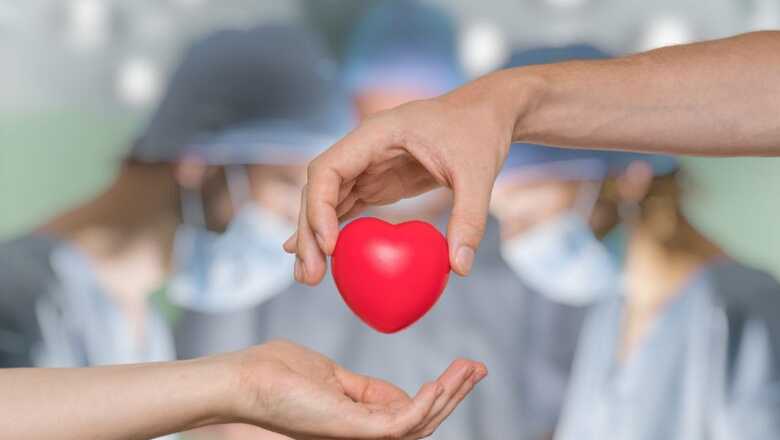
views
Heart Transplant Day is observed annually on August 3 to raise awareness about the life-saving procedure that replaces a damaged heart with a healthy donor heart. This day honors the courage of transplant recipients, their families, and the selfless organ donors. It serves as a reminder of the importance of organ donation and the transformative impact it has on patients’ lives. Through education and advocacy, Heart Transplant Day aims to promote empathy, compassion, and support for those facing heart disease and the incredible medical advancements that have improved countless lives. Dr. Milind Hote, Cardio Surgeon, AIIMS New Delhi answers some very important questions on heart transplant day.
- Can you provide an overview of the historical development of heart and lung transplant practices? What are the major changes that have come about in the process from the time you performed your first transplant to this day?
The history of heart and lung transplant practices has undergone a remarkable journey that has transformed the landscape of cardiac care and improved the lives of countless patients. We have seen encouraging trends in both input and output factors in the recent years. On the input side, one of the most significant changes that have positively impacted heart and lung transplant practices is the increase in organ donation numbers. More individuals and families are now willing to donate organs after the loss of a loved one, contributing to a larger pool of potential donors. Another key factor that has led to a rise in organ (especially, heart) transplants is the significant growth in the number of medical centers and specialized transplant teams capable of performing heart and lung transplants in India. This increase in the availability of transplant facilities has made it more convenient for recipients to access these services and has ensured that transplant candidates have a greater chance of receiving suitable organs in a timely manner.
- What are the challenges that early heart and lung transplant pioneers, such as yourself, faced, and how have they been addressed in modern practices?
The biggest challenge in heart transplants was the availability of suitable donors. Donors of heart transplants are primarily post-accident victims and the decision to donate their organs lies with the families. Earlier, the willingness of families to donate organs after such incidents was quite low, with only approximately 1 out of 25 families consenting to donation. However, there has been a significant shift in public awareness and perception surrounding organ donation over the years and increasingly more people are now willing to donate organs. This growth in awareness and willingness to donate among people can be attributed to publicised transplant success stories in various parts of country (these stories tug the people emotionally) and also to the fact that more people now know that advancements in medical science have made transplants more viable and safer.
- What have been some of the key milestones or breakthroughs that have improved the success rate of heart and lung transplants over the years?
Heart transplants have become more successful due to a mix of factors. First, we have improved immunosuppressive medications with better safety profiles, which effectively minimize the risk of organ rejection and “other organ” damage. Adding to that, we have highly skilled surgeons and dedicated transplant teams who are well-equipped to handle complex cases, minimize surgical risks, and provide comprehensive post-operative care, leading to higher success rates and better long-term results for heart transplant recipients. Lastly, we have better ICU facilities and advanced machines such as ECMO (Extracorporeal Membrane Oxygenation) that can tackle complications or challenges in the early post-operative period.
- How have technological advancements influenced the evolution of heart and lung transplant procedures over the years? Further, in recent years, what are some of the emerging technologies or innovations that hold promise for further advancements of these procedures?
There are several emerging technologies in the field of heart transplant procedures that hold immense promise. For instance, DCD (Donation after Circulatory Death) is now being increasingly practiced in the Western countries. The practice allows organs to be recovered from donors after cardiac death, expanding the potential donor pool and addressing the shortage of available donor hearts. It has the potential to significantly reduce waitlist times and offer hope to patients in critical need of heart transplants. At the same time, organ storage boxes have also become more sophisticated extending the preservation time to up to 10 – 12 hours, which is double the time of what routine storage boxes supports.
- Could you elaborate on the clinical improvements in surgical techniques and post-operative care that have contributed to better patient outcomes?
We have made significant advances in clinical practices that have contributed to better outcomes in post-transplant health of patients. ECMO, a life-support system, has proven instrumental in providing temporary cardiac and respiratory support to patients who often are in critical condition before and after heart or lung transplant surgery. At the same time, Nitric Oxide ventilation, which is an advanced technique that delivers nitric oxide gas to the patient’s lungs has been successful in preventing right heart dysfunction, a common complication after heart or lung transplantation.
- What does the future hold for heart and lung transplant practices, and how do you envision the field evolving in the coming years?
The future of heart and lung transplant practices is very bright. We are confident that with introduction of new technologies, and more professionals receiving training under experienced teams, the number of transplant procedures in India will increase steadily.




















Comments
0 comment